Ranked! The 100 best football stadiums in Britain
From Anfield to Oakwell, FFT ranks the best football stadiums by their matchday experience. We’re convinced there’ll be absolutely no arguing about it...
40. Cwm Nant-y-Groes
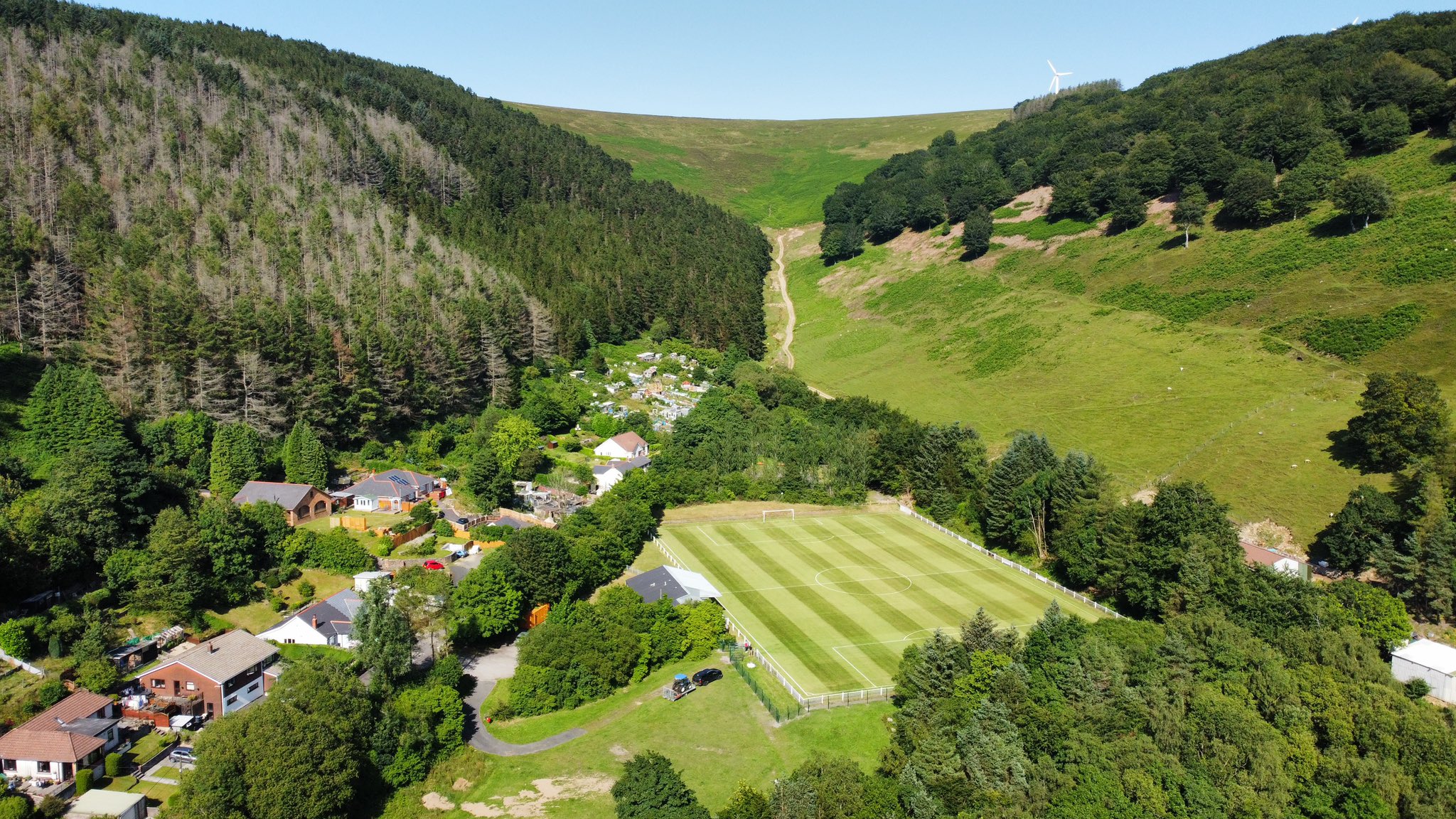
Abertillery Bluebirds
Capacity N/a
Opened 1989
This might look like a scene from The Sound of Music, but no – behold the beauty of Welsh village Six Bells and its stunning ground of third-tier side Abertillery. Drainage issues forced them to play on a 3G surface elsewhere until this year, when local grafters improved the pitch to ensure a return home. We’re very glad they did.
BEST FEATURE A conifer valley overhead – that’s quite nice, isn’t it?
39. John Smith's Stadium
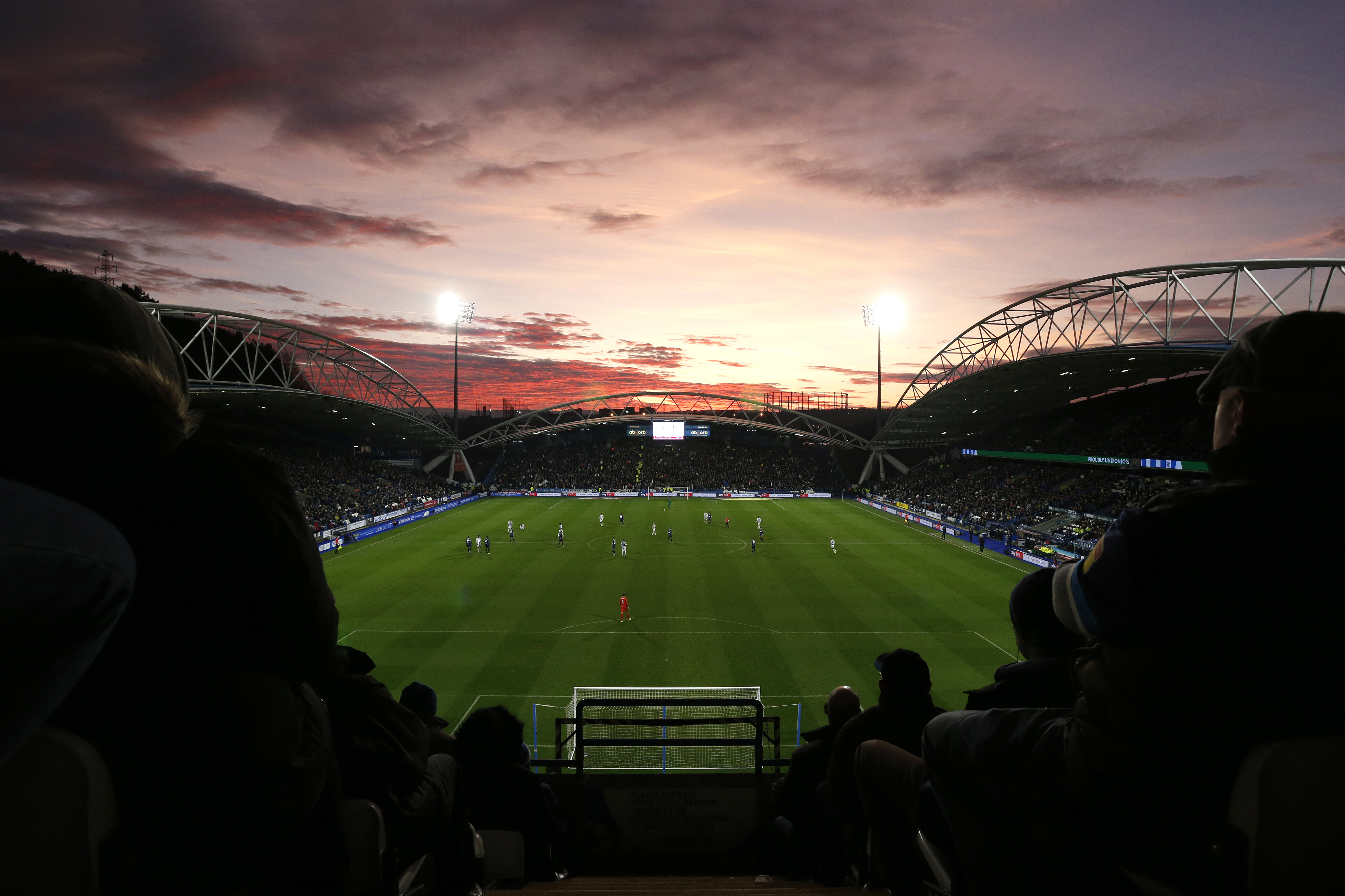
Huddersfield Town
Capacity 24,329
Get FourFourTwo Newsletter
The best features, fun and footballing quizzes, straight to your inbox every week.
Opened 1994
Leeds Road was the archetypal mid-century English football ground; the new place up the road pointed to the future. All graceful arcs and fan-led architecture, the new Kirklees Stadium opened with just the two side stands, the ends following in due course. Not many grounds get voted the RIBA’s Building of the Year; this did, in 1995.
BEST FEATURE Those roof-supporting ‘banana trusses’.
38. Pittodrie
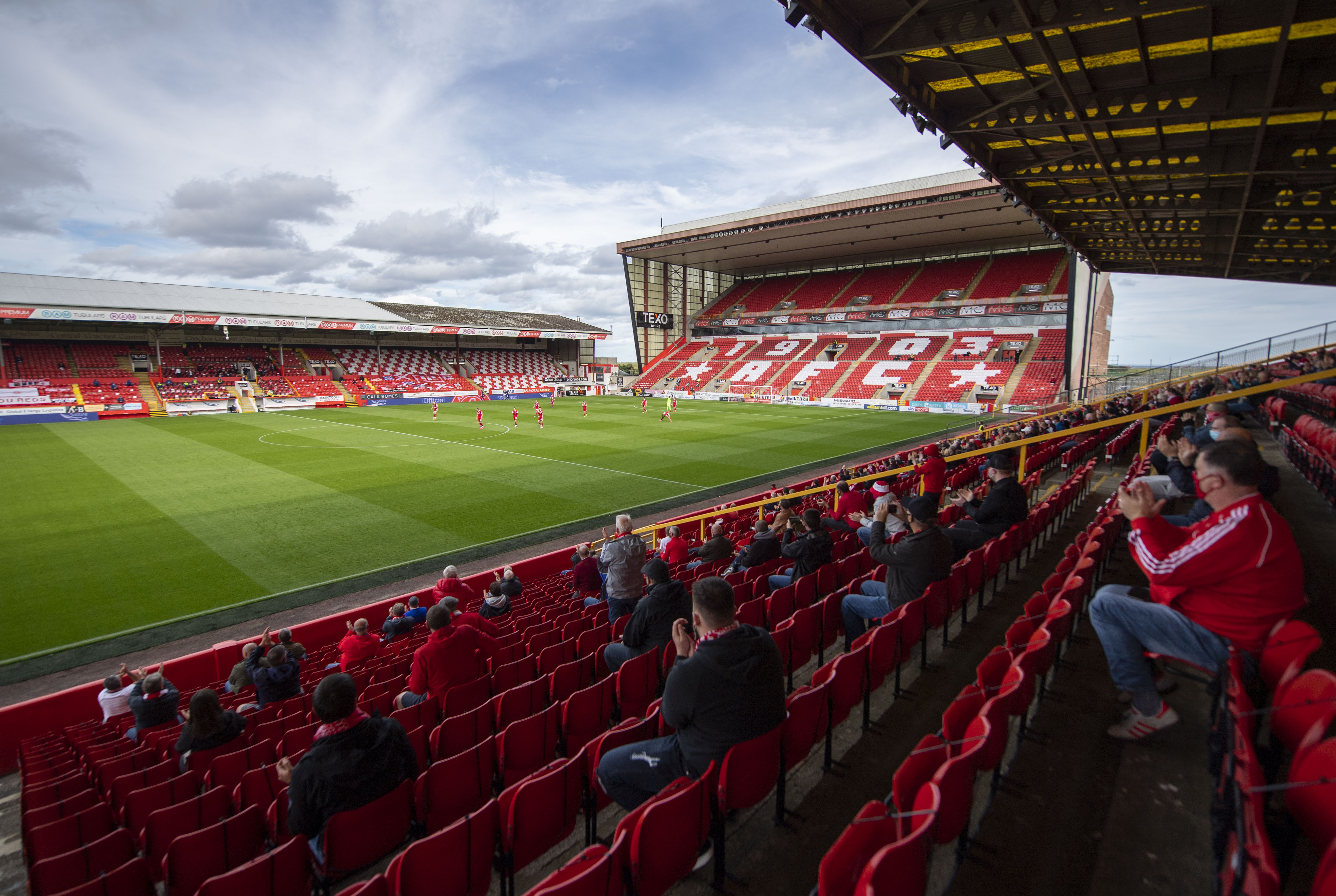
Aberdeen
Capacity 20,866
Opened 1899
There’s no shortage of folks pleased to hear that a proposed stadium move has stalled. The distinctive old floodlights and granite façade of the Merkland Stand are eye-catching, while the club have done a great job revamping their vibrant Red Shed area.
DID YOU KNOW? Pittodrie was the first football stadium to feature a dugout, thanks to trainer Donald Coleman in the 1920s.
37. Mill Road
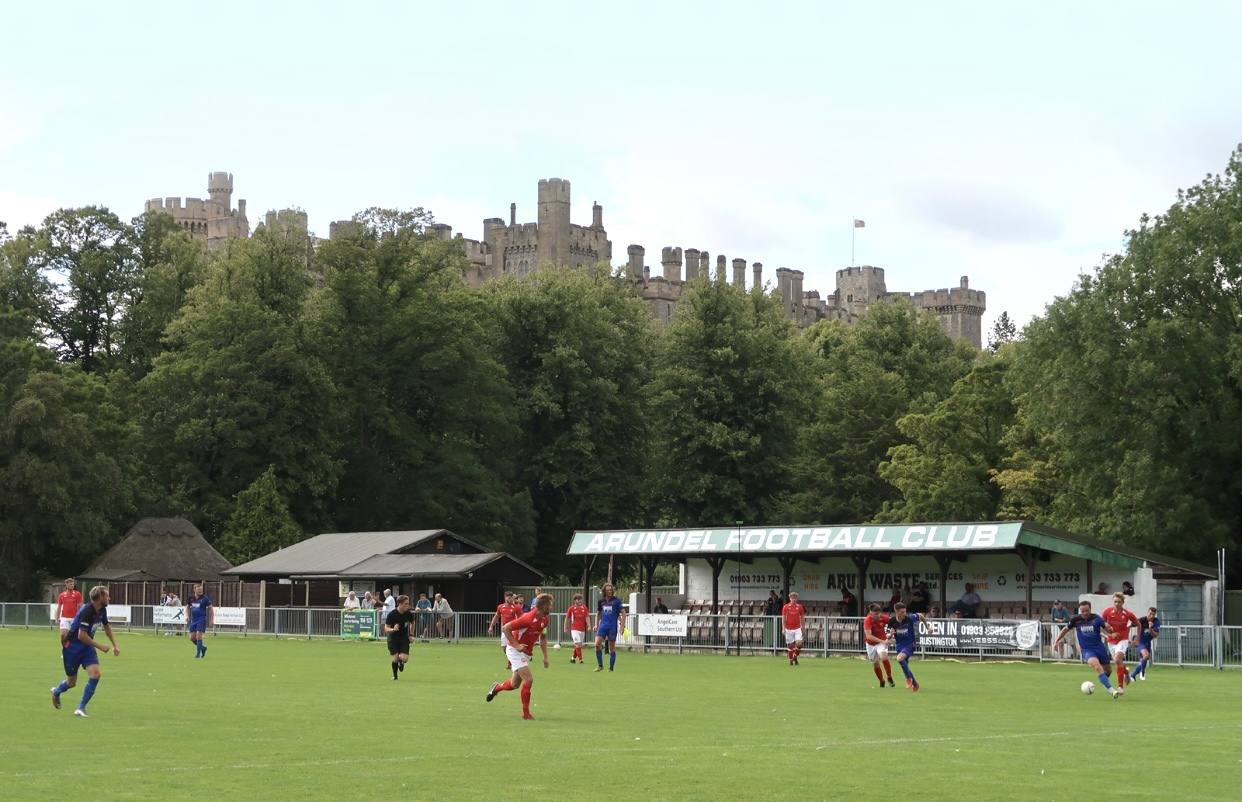
Arundel
Capacity 2,200
A view that belongs on a picture postcard, with greenery and history. The Mullets – a nickname that sadly has nothing to do with 1980s footballers – have quite a sight.
BEST FEATURE The views of the magnificent Arundel Castle, built by an ally of William the Conqueror, home to the Dukes of Norfolk for 400 years and stylishly restructured in the 19th century.
36. Etihad Stadium

Manchester City
Capacity 55,017
Opened 2003
Proof that an athletics stadium can be transformed into a top-quality football ground. Outstanding facilities and some brilliant football have made the Etihad a byword for big games, though a struggle to fill it for smaller ones doesn’t always lend itself to a raucous atmosphere.
WEIRDEST MOMENT Phil Brown’s half-time team talk on the pitch when his Hull side were 4-0 down in 2008. Final score: 5-1.
35. Bloomfield Road
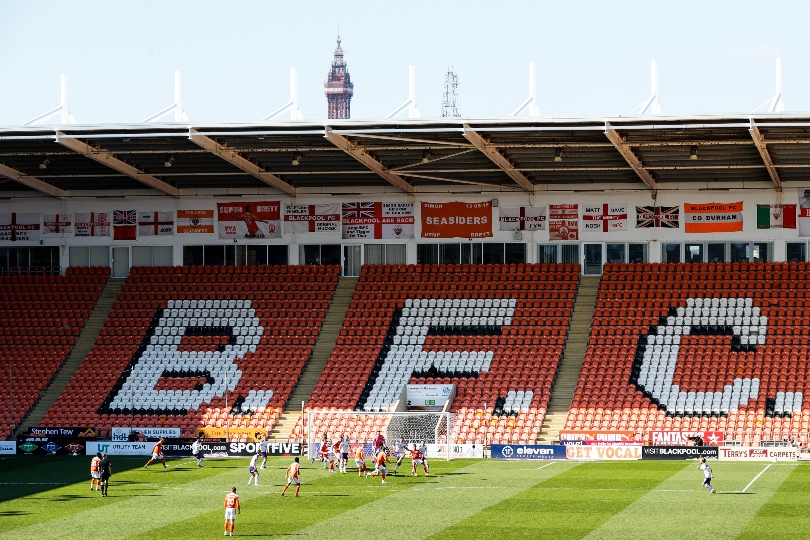
Blackpool
Capacity 16,616
Opened 1899
Blackpool’s home is a tangerine butterfly from a very ugly caterpillar. That the rotting Kop, dingy Scratching Shed, low-slung main stand and shallow South Stand have gradually been replaced by shiny new stands (even the ‘temporary’ East is an upgrade) is all the more remarkable given the club’s ownership affairs over the years. And it’s still a great town for an away day.
BEST FEATURE The statue of the universally loved Jimmy Armfield.
34. Victoria Park
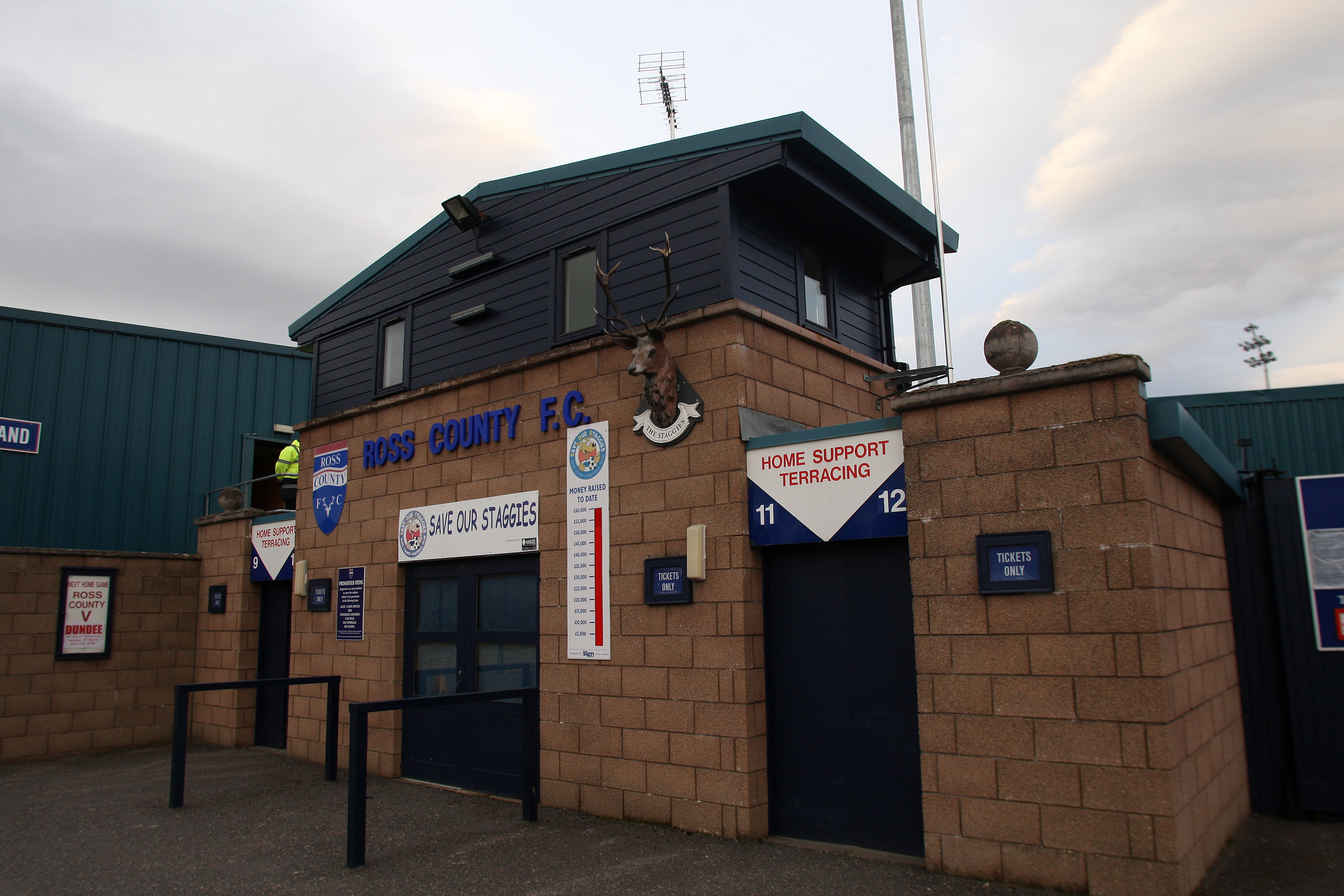
Ross County
Capacity 6,541
Opened 1929
OK, so it’s a trek for most – but a worthwhile one to a beautiful part of Scotland. Dingwall’s train station couldn’t be handier and also boasts a welcoming pub, The Mallard, whether you’re looking to celebrate or commiserate. Victoria Park’s haggis and venison pie is almost worth the trip itself.
DID YOU KNOW? Victoria Park has a greater capacity than the population of Dingwall.
33. Huish Park
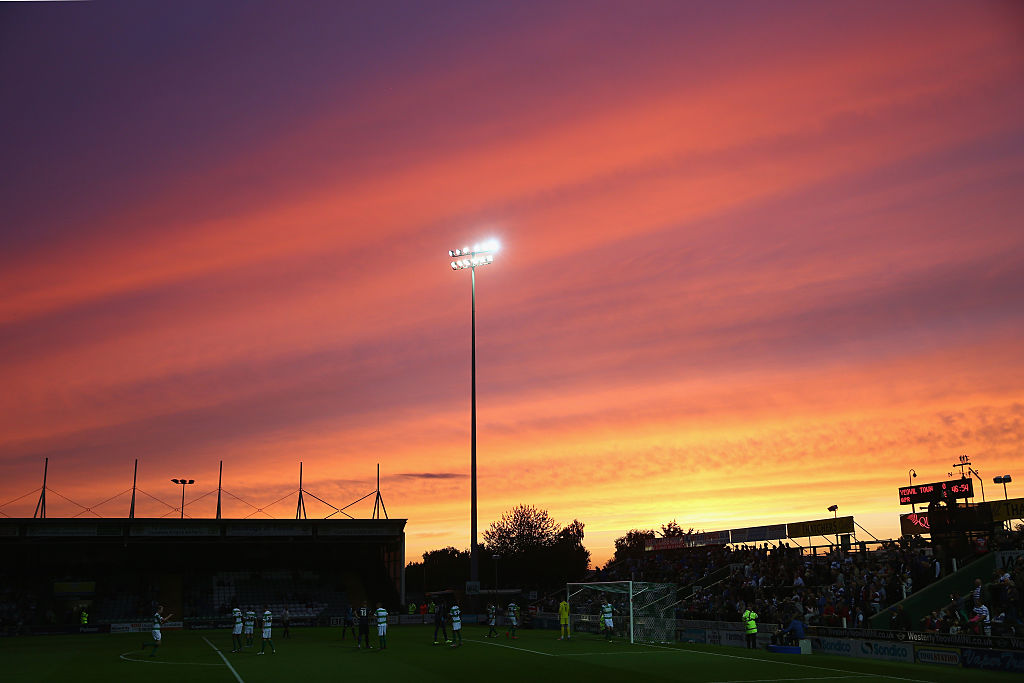
Yeovil
Capacity 9,565
Opened 1990
It doesn’t have the famous slope of the old Huish, indelibly associated with the FA Cup shock of Sunderland in 1949, but the elegant, distinctive Tamburino Stand and open terraces make it the model for many lower-league grounds.
WEIRDEST MOMENT Four Yeovil fans staged a pitch invasion in 2018 and tried to escape by climbing over the away end – but got trapped on a roof.
32. Blandy Park
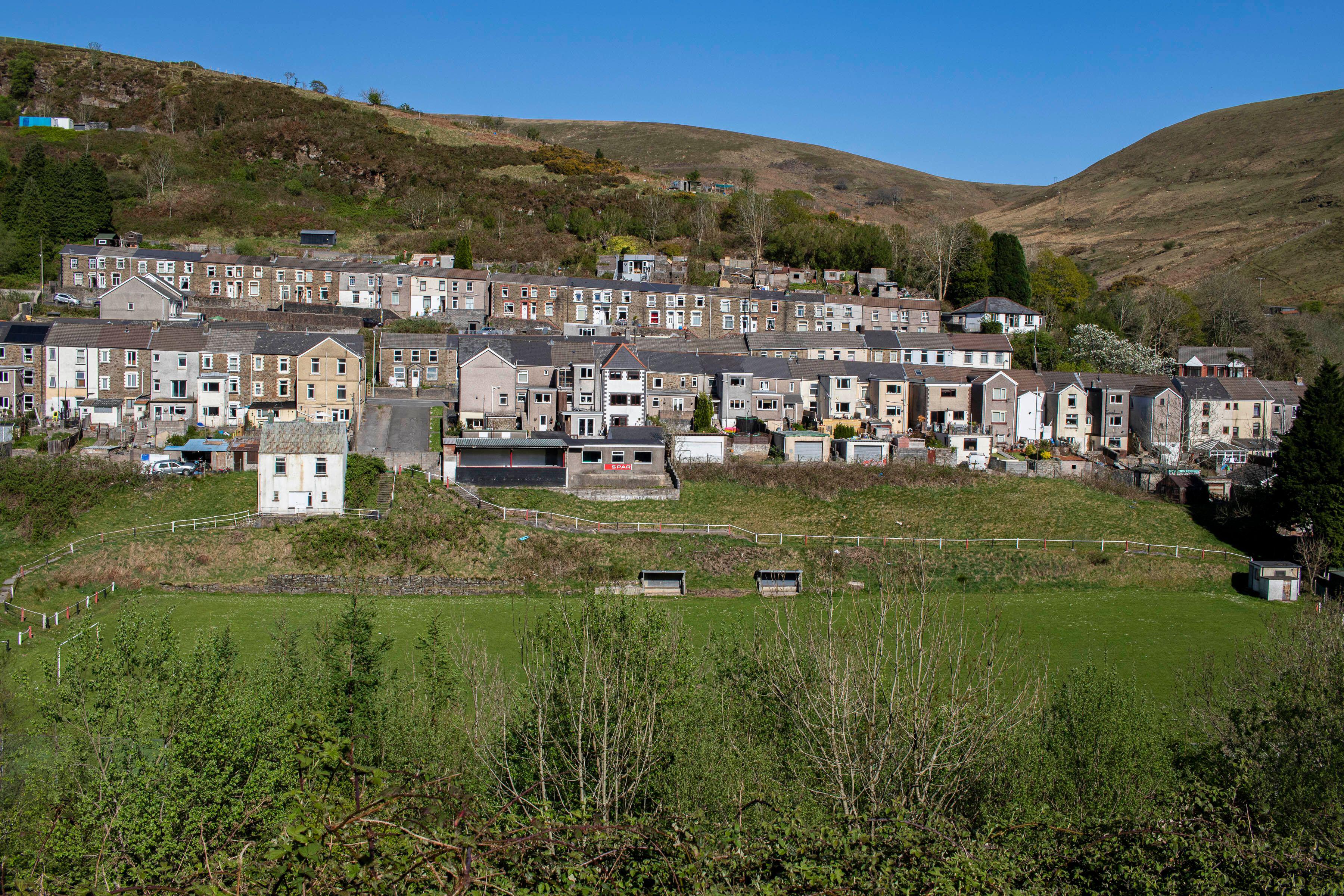
Garw S.B.G.C
Opened 1920
What is it about Wales and rubbish tips? It’s a minor miracle this pitch in the village of Pontycyme, south Wales, even exists. Once a coal waste dumping ground, it was eventually transformed by local miners who dug out the bank to ensure a flat piece of playable land in terrain that’s anything but. And what results.
BEST FEATURE A two-storey cottage that also serves as the club’s changing rooms. Obviously.
31. Amex Stadium
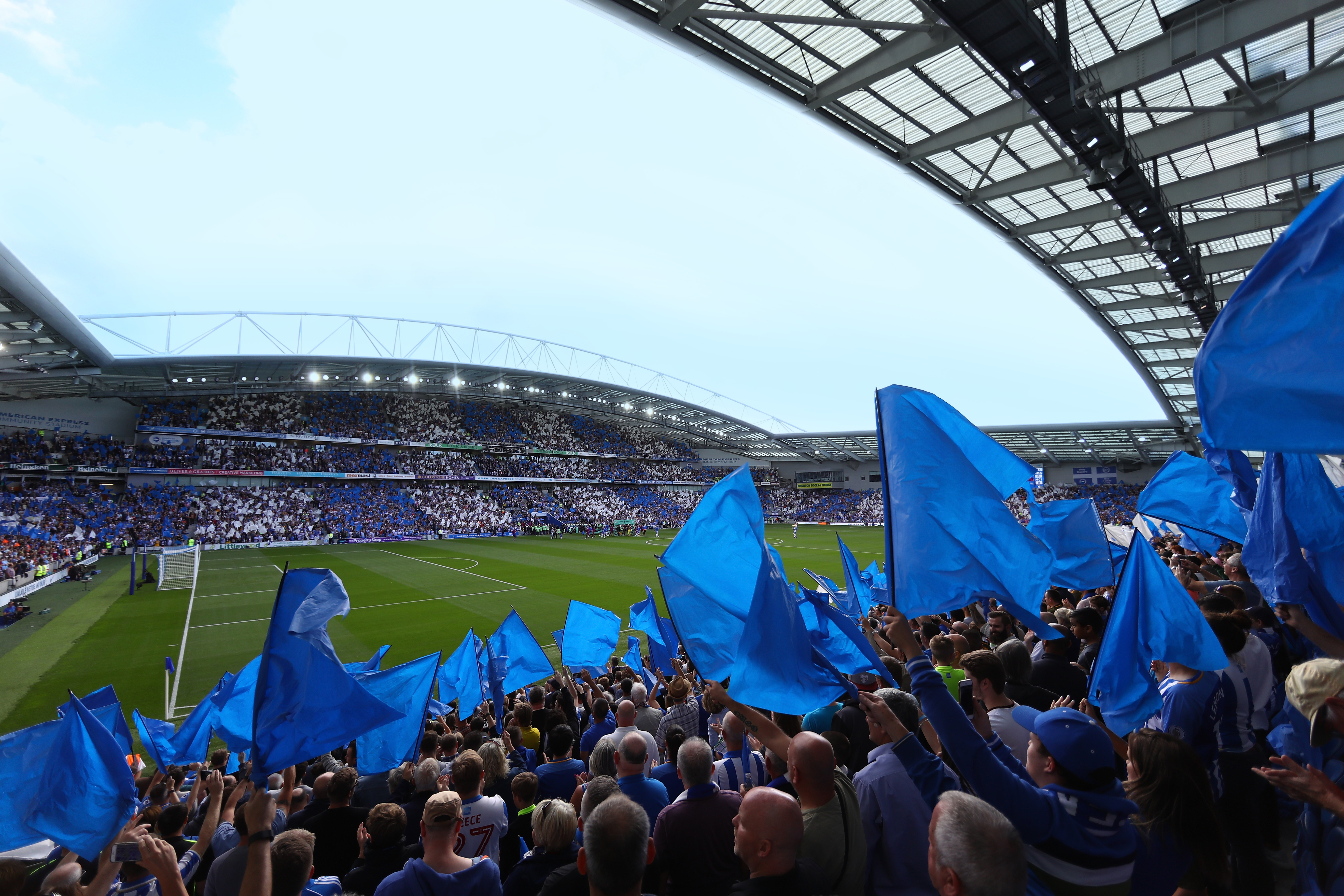
Brighton & Hove Albion
Capacity 31,780
Opened 2011
Home is sweeter for absence, and Brighton slept rough longer than most. After 14 sofa-surfing years, the Falmer opened a new era. It’s well-equipped and modern, to the point that ticket holders get free public transport – not, in truth, ideal for car-driving away fans.
BEST FEATURE The hawks that, without irony, scare away seagulls.
30. The Enclosed Ground
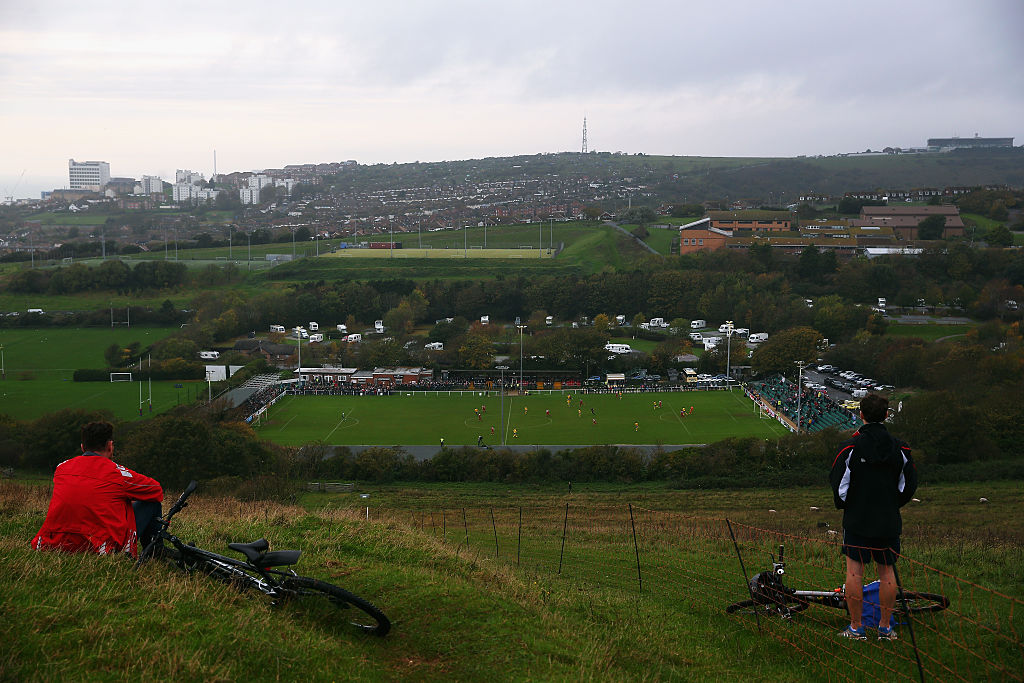
Whitehawk
Capacity 2,000
Opened 1954
Sunk into East Sussex’s South Downs, the Brighton-based ground is easily one of non-league’s most picturesque. Occasionally visited by an actual hawk in club regalia for special occasions, it’s pretty from pitchside – or higher…
BEST FEATURE Cheapskates rejoice: you can watch games for free if you fancy trekking up the hill, with glorious views thrown in for good measure.
29. Molineux
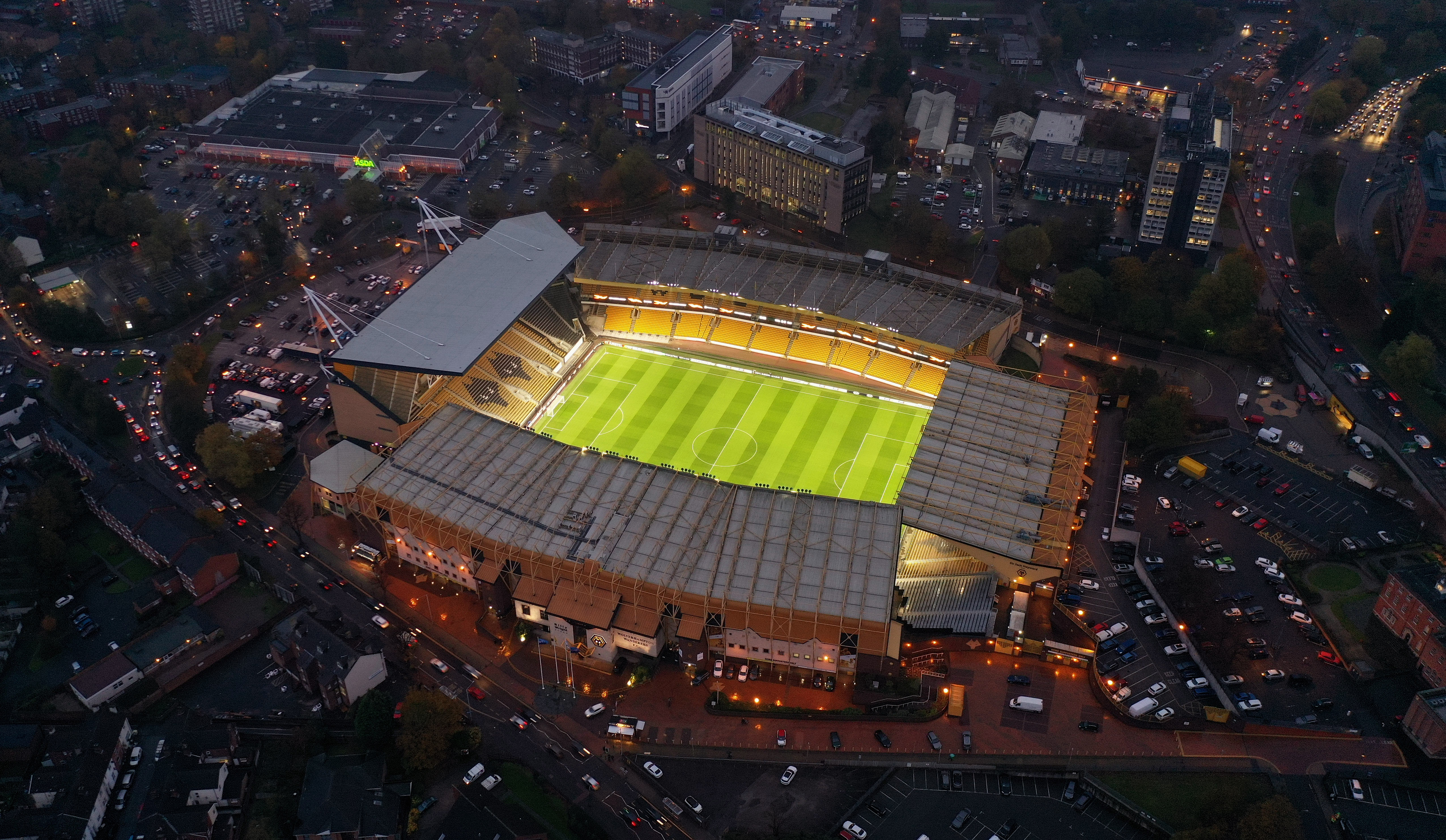
Wolverhampton Wanderers
Capacity 32,050
Opened 1889
If you like old gold, this is the stadium for you. Handily located near Wolverhampton city centre, it’s been expanded in recent years after a major overhaul in the 1990s. The atmosphere is usually decent.
WEIRDEST MOMENT The bomb squad arriving to conduct a controlled explosion on a suspicious foil package before an England U21 game in 1996 – it turned out to be a cheese sandwich.
28. Hampden Park

Scotland
Capacity 51,866
Opened 1903
Some of the views are poor and the stands too far from the pitch, but Hampden remains iconic. If you need convincing, dig out the footage of Leigh Griffiths scoring a second free-kick against England in 2017. We also recommend its fine museum.
DID YOU KNOW? Liverpool’s Andy Robertson worked in the office when he was a part-time player at Queen’s Park.
27. The Den
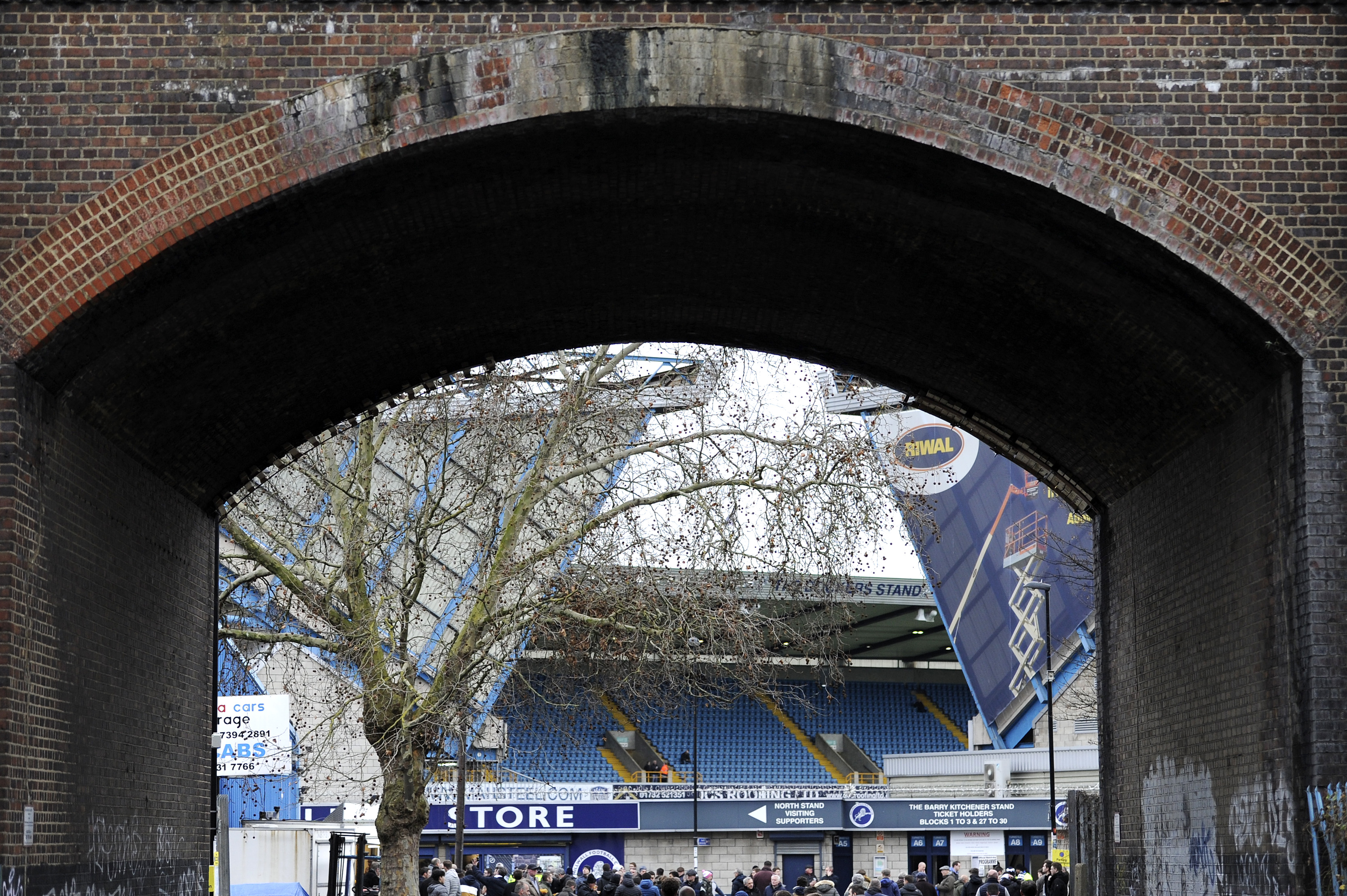
Millwall
Capacity 20,146
Opened 1993
The oldest of the ‘new’ all-seater stadiums built following the Taylor Report – and also the closest to central London. There’s a great atmosphere for the big games… particularly when West Ham or Leeds are in town.
DID YOU KNOW? The Den also doubled up as the home ground for Sky One’s fictional team Harchester United in Sky One hit Dream Team.
26. King Power Stadium
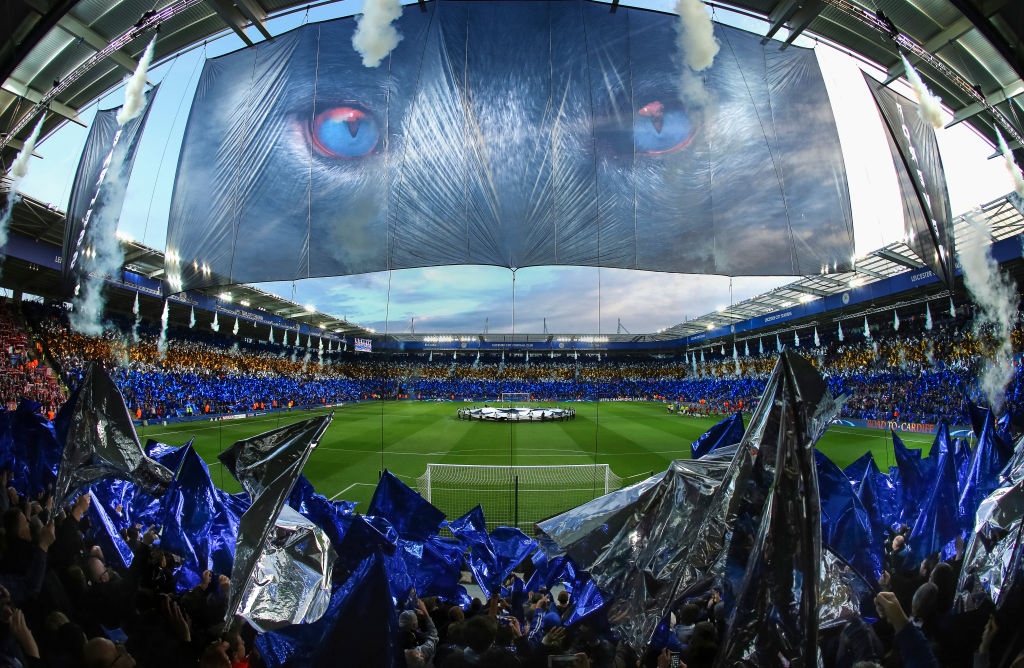
Leicester City
Capacity 32,261
Opened 2002
Moulded from the same bowl that had popped out Southampton’s St Mary’s a year earlier, the Foxes’ Filbert Street replacement was eventually sprinkled with magic dust to create the kind of party atmosphere that could only accompany the club’s wild magic carpet ride. Plans to expand it to 40,000 look highly impressive.
WEIRDEST MOMENT Leicester fans created a minor earthquake celebrating Leo Ulloa’s last-minute winner against Norwich in March 2016.
25. Adams Park
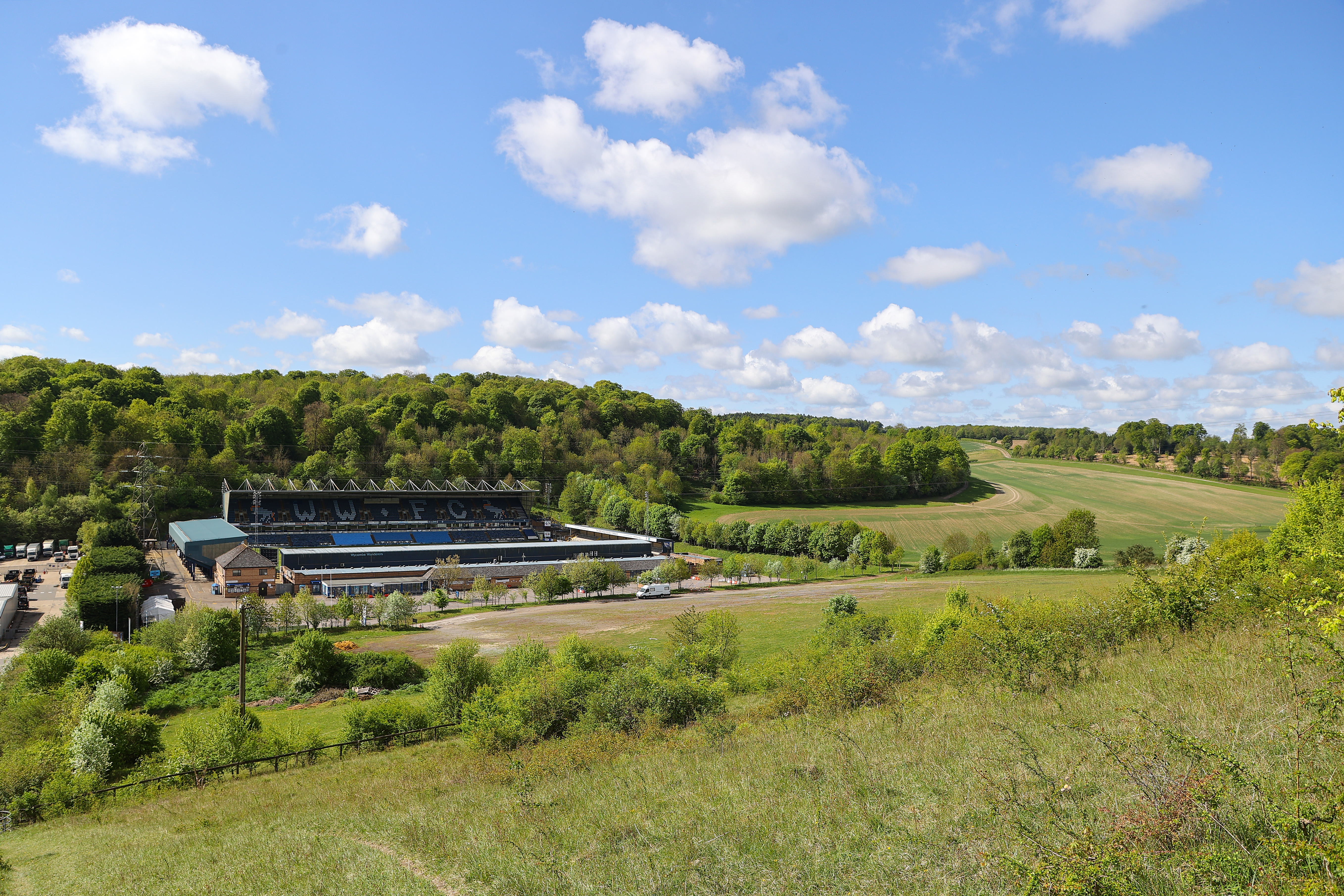
Wycombe Wanderers
Capacity 10,137
Opened 1990
Although the approach to Adams Park is through an ugly industrial estate, the ground is flanked on its remaining three sides by open countryside and woodland. If the on-field action gets dull, simply gaze skywards to watch the resident red kites circle overhead.
DID YOU KNOW? Adams Park’s first-ever match saw Wycombe manager Martin O’Neill up against former club Nottingham Forest – and former boss Brian Clough.
24. Hillsborough
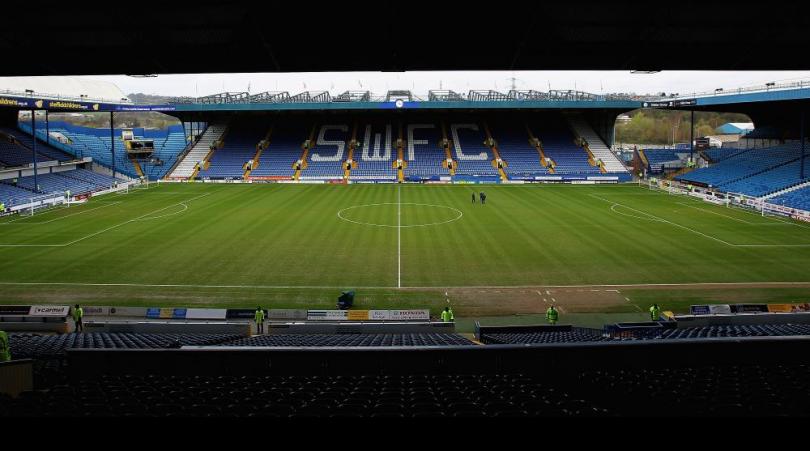
Sheffield Wednesday
Capacity 39,732
Opened 1899
Only the bang-central Villa Park has hosted more FA Cup semi-finals than the Owlerton behemoth, with its history-defining stands. The 1915 main stand with its clock face and finial; the 1961 North Stand with the country’s first full-length cantilever roof; the huge Kop symbolising the terrace era, and the haunting Leppings Lane that ended it.
BEST FEATURE The North Stand’s graceful space-age curves.
23. The City Ground
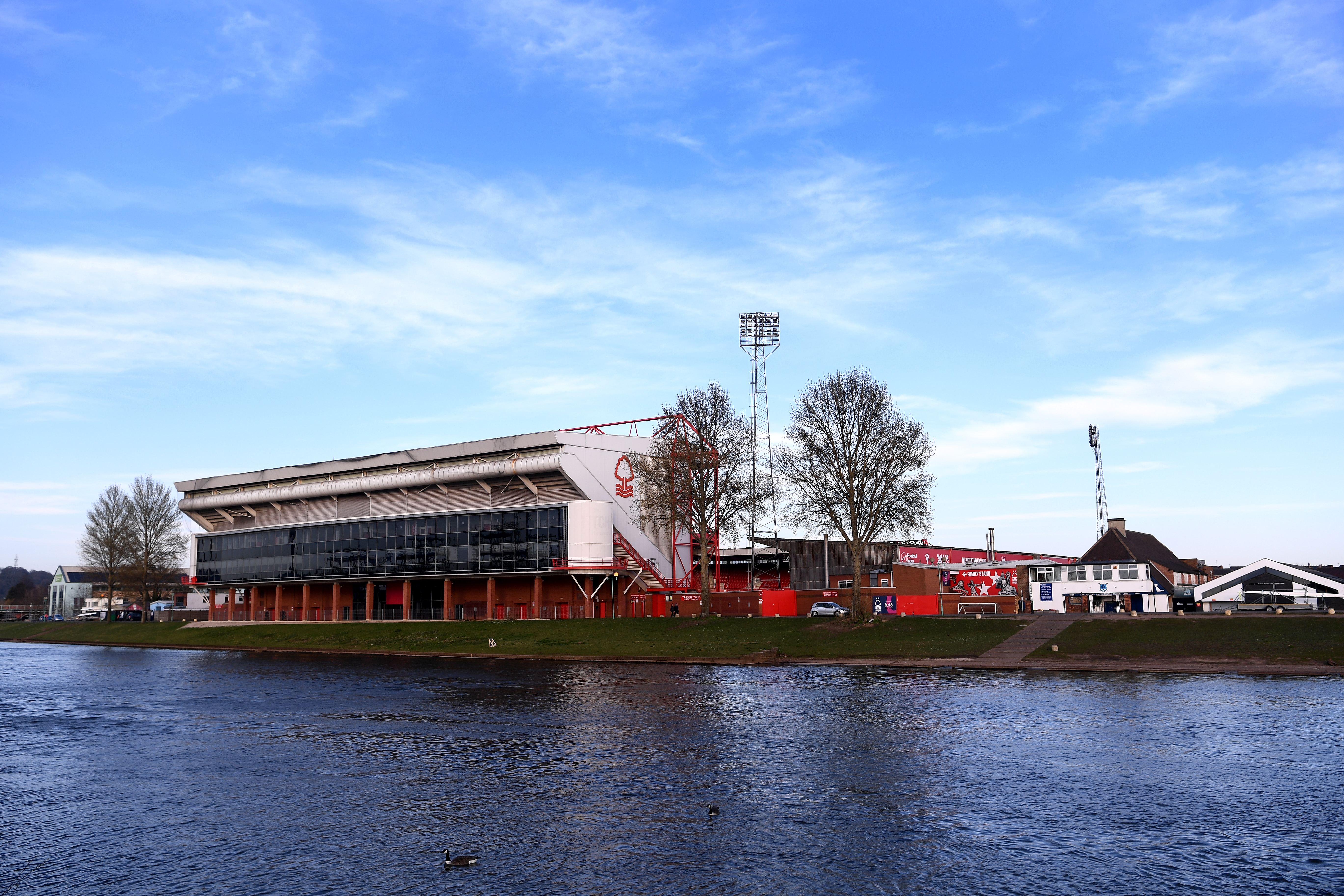
Nottingham Forest
Capacity 30,445
Opened 1898
Notts County’s Meadow Lane is closer to the city centre, but Forest’s Trentside home was the centre of Europe for two seasons. Brian Clough’s success built the expensive stand that (after remodelling) bears his name, and history hangs heavy around a ground awaiting a comparable hero that may never come.
BEST FEATURE The Bridgford End’s bent roof, which keeps nearby houses in sunlight.
22. Champion Hill
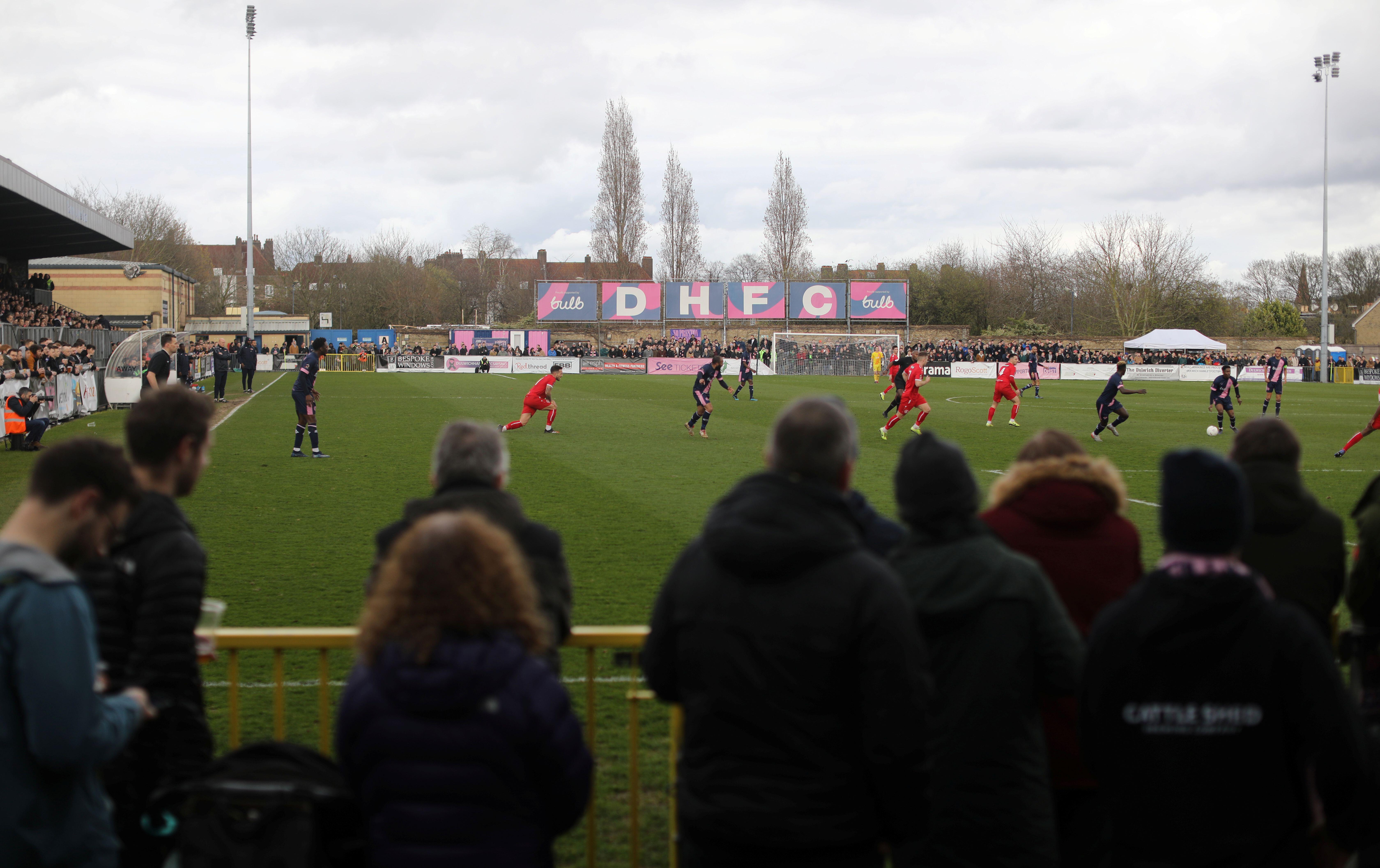
Dulwich Hamlet
Capacity 3,000
Opened 1992
The local manor of these south London cult favourites recently evaded the property developer’s wrecking ball. Mix with the band of mild-mannered ultras known as The Rabble… and keep an eye out for former player turned newly appointed director Peter Crouch.
WEIRDEST MOMENT Champion Hill was once the location for a terraces-cleaning task on The Apprentice.
21. Valley Parade
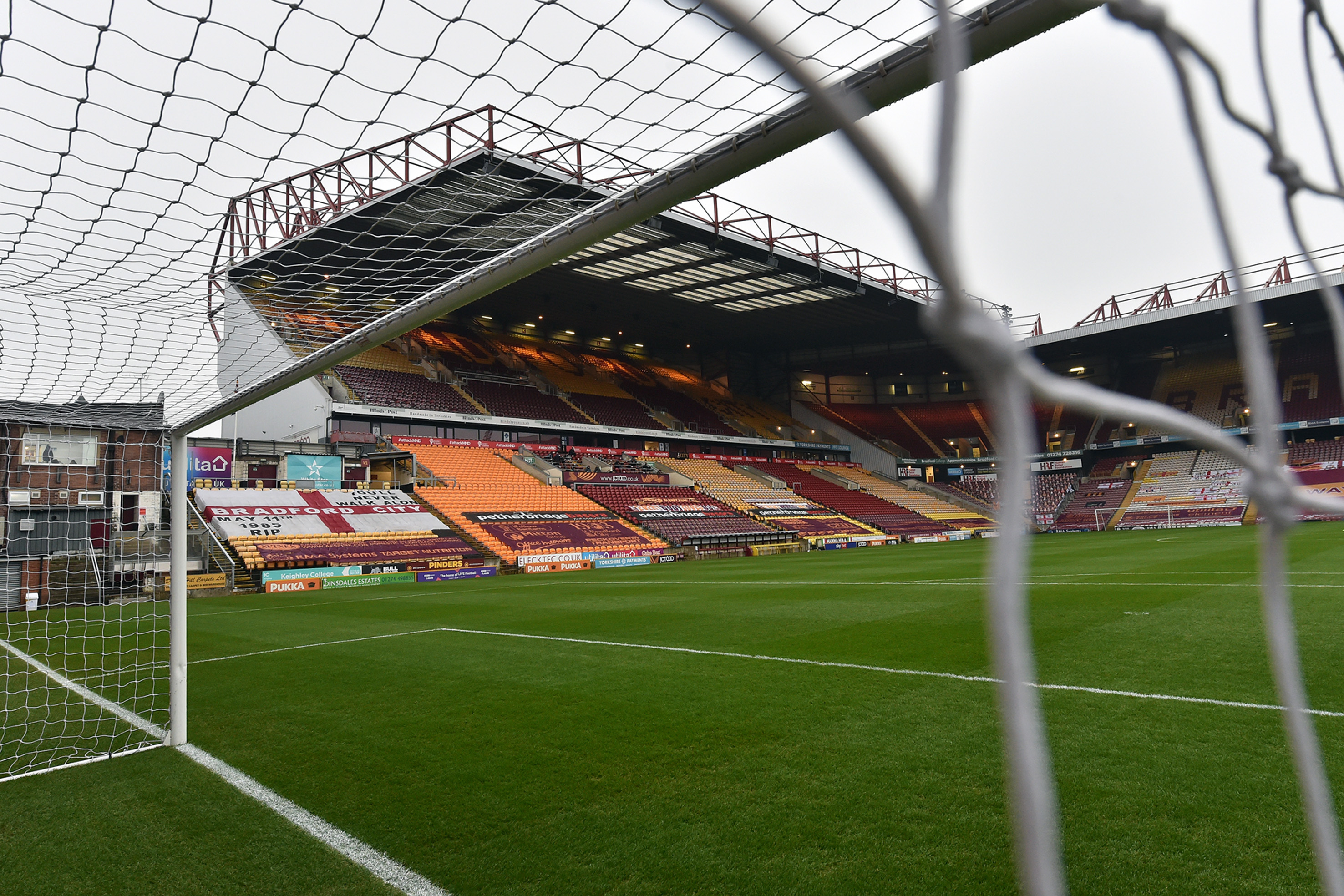
Bradford City
Capacity 25,136
Opened 1886
Stubbornly clinging to a Pennine slope, Valley Parade wears its cantilever technology proudly, like a Yorkshire version of the Pompidou. Its mismatched stands – the main one ends abruptly to accommodate the street that names the stadium – create a winningly unique ground of two halves.
BEST FEATURE The players emerging from what looks like a non-league changing hut.
Current page: The 100 best football stadiums in Britain: 40-21
Prev Page The 100 best football stadiums in Britain: 60-41 Next Page The 100 best football stadiums in Britain: 20-1
Chris joined FourFourTwo in 2015 and has reported from 20 countries, in places as varied as Jerusalem and the Arctic Circle. He's interviewed Pele, Zlatan and Santa Claus (it's a long story), as well as covering the World Cup, Euro 2020 and the Clasico. He previously spent 10 years as a newspaper journalist, and completed the 92 in 2017.
